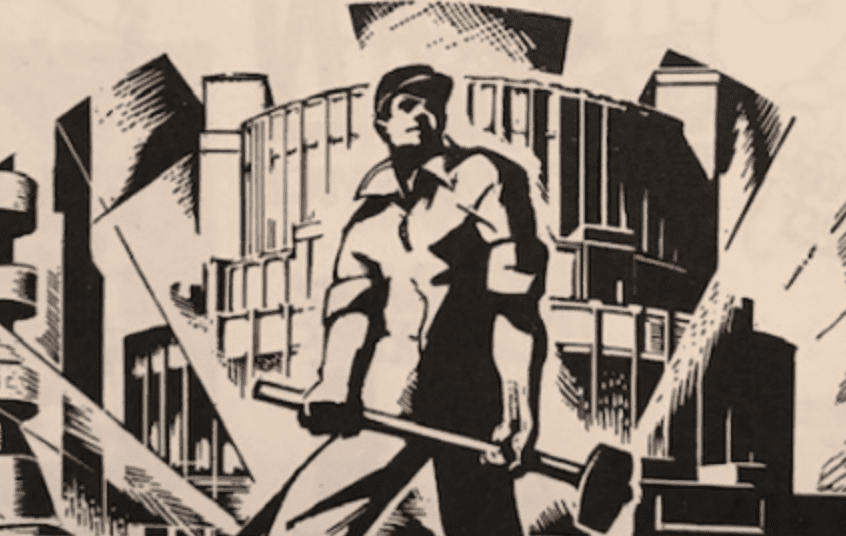Search Posts
Recent Posts
- Rhode Island Legislature Highlights Accomplishments for the 2025 Session June 25, 2025
- Sports in RI: Cody Tow, Volleyball Past, Present and Into His Future – John Cardullo June 25, 2025
- Need a Break? Time for Sour Grapes – Tim Jones June 25, 2025
- Rhode Island Weather Forecast for June 25, 2025 – Jack Donnelly June 25, 2025
- It is what it is: Commentary on 6.25.25 with Jen Brien June 25, 2025
Categories
Subscribe!
Thanks for subscribing! Please check your email for further instructions.

Tradition! Architecture as an anchor of stability in a churning, complicated environment – David Brussat
by David Brussat, Architecture Here and There, contributing writer
Architecture may be suffering from a hegemonic conundrum that afflicts the major institutions of the whole world. It is not just hegemon vs. hegemon anymore, according to analyst Richard Fernandez in his recent essay “There Is Something Wrong with our Giant Institutions.” Instead, what we may now have is the slow-motion collapse of major societal institutions – whether in the realm of world affairs (such as the U.S. vs. China) or in the operation of one’s local Department of Motor Vehicles. . (We all know how the U.S. is collapsing. I would be interested in hearing how China is collapsing. But the CCP is unlikely to satisfy my curiosity.) .
So what has that to do with architecture? First, please forgive me for using a ridiculously highfalutin word, hegemon, which means an entity of powerful influence in a particular field. Fernandez speculates that the big institutions that run our society have become too complex to manage effectively, leading to the “awareness that bureaucracies have expanded to their level of incompetence.” Fernandez concludes: The world, like a team of wild horses, may have gotten away from the U.N., Xi, Vladimir, and Joe because it’s gotten too dang complicated to control. Going back to historical metaphors, humanity may be reliving, not the fall of Rome, but the fall of Babel.
Architecture’s hegemon since World War II has been modernism. In the 1950s it replaced tradition’s dominance in building design that had lasted for centuries. Architecture used to be about designing buildings, but in recent decades the field has submerged itself in a broader realm of finance and industry, in which profits depend not on satisfying the needs of individual clients – whether of families or corporate boards – but on advancing interconnected corporate and institutional strategies and agendas having little to do with specific buildings or even, lately, the established purposes of those corporations or institutions.
The diversity of such agendas has undermined the single-mindedness of most advanced design firms. The firms themselves have grown exponentially as each item of their expanding agendas has required the hiring of employees to staff a cascading range of new offices and departments, some of which have little or nothing to do with architecture. Urban planning firms have always been more complex than architecture firms, but their expanding agendas also push them further toward unmanagability.
A good example, perhaps, is the new urbanism, which started out as a movement that in the 1990s gained popularity by designing new communities that appealed to families seeking traditional homes in walkable neighborhoods of a sort where “grandma used to live.” In recent decades, the new urbanists seem to have sunk their original thinking into a broader agenda where style and tradition are now secondary to such meta concerns as climate change and social equity. The new agenda has introduced complexity into the original movement’s simple program – “the old urbanism revived” – that so many Americans found so compelling.
This increased complexity has been embraced by modernist architectural firms but resisted by more traditional firms interested in offering the normal services provided by firms that build traditional houses and buildings. The existence of such firms was almost eradicated by 1960. Today, however, they are experiencing a reasonably robust revival. Such firms operate on a simpler, more direct agenda, that of designing houses and buildings for clients. They are an anchor of stability in a fast-changing field embedded in a fast-changing world. Ditto families who seek an oasis amid the churning sands of this complicated environment.
Simplicity is not simplemindedness. Traditional architecture springs from classical forms that are nothing if not complex, and require years of study for architects to master. Buildings without ornament turn out, however, to be more stunningly complex than buildings of refined embellishment. It is difficult for modernist architects to invent new forms without aesthetic precedent, involving novel materials and recourse to computerized manipulation of elements. On top of that consider the added difficulty of navigating the intersection of practicality with the broader agenda demanded of most architects. The head spins.
The public often feels alienated from their built environment, and increasingly from the design process at their local level. They feel helpless to press for beauty. Transparency is elusive. Nowadays, drawings of proposed development projects aim more to disguise than to reveal their intended appearance, if not from clients then from possible opponents in the community.
Each new attempt at novelty strains the relationship between a building and its intended use. Complexity of purpose challenges purity of form, defeating any pretext of straightforwardness in design. New modernist buildings of high aesthetic intent all bear this out.
Traditional architecture, on the other hand, consists largely of taking the same tried and true steps codified over centuries and applied, again and again, in the process of designing and constructing buildings that meet their avowed purpose. In the hands of generations of craftsmen on site, change operates more slowly in the development of traditional styles, materials, technologies and construction techniques than change in modernist practices, which are always in flux.
The late Roger Scruton wrote that “[t]he classical idiom does not so much impose unity as make diversity agreeable.” Bringing order and dignity to the stage of human endeavor – including public participation in solving problems from the local level to the global – could and should again become the purpose of architecture. It has been lost but it can be regained.
It is hard to know which direction these thoughts could lead if teased out beyond my level of competence. Still, it seems clear that in the battle of styles, in the war between a healthy simplicity and a dire complexity, traditional architecture may boast a decided advantage in challenging a modernist hegemon increasingly tangled in its own Peter Principle.
To read the full article, go to: https://architecturehereandthere.com/2021/12/07/the-hegemony-of-architecture/
To read more articles by David Brussat for RINewsToday, go to: https://rinewstoday.com/david-brussat-contributing-writer/
_____

My freelance writing and editing on architecture and others addresses issues of design and culture locally and globally. I am a member of the board of the New England chapter of the Institute of Classical Architecture & Art, which bestowed an Arthur Ross Award on me in 2002. I work from Providence, R.I., where I live with my wife Victoria, my son Billy and our cat Gato. If you would like to employ my writing and editing to improve your work, please email me at my consultancy, dbrussat@gmail.com, or call (401) 351-0457
